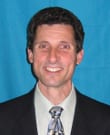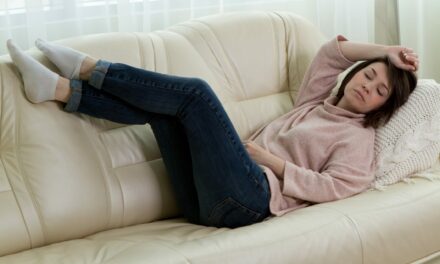By Steven C. Scherr, DDS
For those of us in the field of dental sleep medicine, it’s clear that we truly live in formative times. Today the rate of sleep apnea diagnosis is increasing rapidly, CPAP intolerance remains high, and dentists are entering the practice of dental sleep medicine at a growing rate.
In response to the rising demands of a burgeoning profession and to establish standards of care, the American Academy of Dental Sleep Medicine (AADSM) wrote the first-ever empiric definition of an effective oral appliance for treatment of sleep-disordered breathing. The definition outlines the characteristics of an effective oral appliance in order to foster consistency for both research and clinical practice. In essence, this reflects best practices for an oral appliance’s purpose, physical features, and function. It allows new research results to be more easily compared and facilitates appliance selection. Not only does it allow for more consistency moving forward, but it creates clarity for clinicians and health insurers and establishes a blueprint for the next oral appliance design breakthrough.
Looking Back: Why a Definition is Necessary
More than 30 years of research and innovation led to this pivotal moment in the history of dental sleep medicine. Beginning with breakthrough literature on a novel tongue retainer published in 1982 and continuing with the first commercial production of oral appliances, interest in oral appliance therapy has flourished exponentially.
Over the ensuing decades, oral appliance ingenuity and innovation has continued to proliferate. Today, scores of designs have been cleared by the US Food and Drug Administration (FDA)—most of which received 510(k) clearance, which acknowledges that the design has substantial equivalence to another design that already has been cleared. FDA approval focuses on patient safety and has helped our emerging field gain traction and relevance. However, the FDA places little emphasis on oral appliance effectiveness.
While there is robust evidence that oral appliances are an effective treatment for sleep apnea, there remains confusion and inconsistency regarding the essential structural elements and measurable outcomes that are fundamental to oral appliance efficacy. The lack of accepted standards for appliance design hinders how research is conducted, compared, and interpreted.
Taking Action: AADSM Develops Definition
In late 2012, the board of directors of the AADSM determined that a definition for an oral appliance was necessary to move the industry forward. The AADSM stands as the leading national organization for dentists using oral appliance therapy to manage sleep-disordered breathing. The AADSM recognized that a definition would allow the industry to establish a benchmark for future research and clinical practice.
Last February, the AADSM organized a consensus conference in Tampa, Fla, gathering 15 clinical and research dental sleep medicine experts from across the United States and Canada. The participants—six of whom contributed to a proceedings and systematic review paper—underwent a rigorous conflict-of-interest disclosure process to ensure the development of a fair and conclusive definition.
Over the course of several days, this group of experts collaborated and drafted a definition, which was formally accepted by the board of directors of the AADSM later that year. The definition and full review paper will be published in the inaugural issue of the Journal of Dental Sleep Medicine in April 2014.
Excerpts: Definition of an Effective Oral Appliance
The empiric definition underscores the purpose, essential physical features, and function of an effective oral appliance: An oral appliance is custom fabricated using digital or physical impressions and models of an individual patient’s oral structures. As such, it is not a primarily prefabricated item that is trimmed, bent, relined, or otherwise modified. It is made of biocompatible materials and engages both the maxillary and mandibular arches. The oral appliance has a mechanism that allows the mandible to be advanced in increments of 1 mm or less with a protrusive adjustment range of at least 5 mm. It has the ability to verify the prescribed protrusive setting as well as permit reversibility of that protrusion. The appliance must be suitable for placement and removal by the patient or caregiver. It maintains a stable retentive relationship to the teeth, implants, or edentulous ridge and retains the prescribed setting during use. An oral appliance maintains its structural integrity over a minimum of 3 years.
The definition’s most important components include the following:
- Oral appliances work best for patients with mild to moderate obstructive sleep apnea (OSA) and primary snoring. They also may be used for patients with severe OSA who do not respond to or are unable or unwilling to tolerate PAP therapies. We don’t live in a one-size-fits-all society. Patients deserve therapeutic choices.
- Custom fabrication improves treatment efficacy. The intimacy of appliance fit is key to successful retention, stabilization, and patient comfort. There was broad agreement among conference participants regarding the strong scientific evidence for custom appliances.
- Dual-arch design and a mechanism that permits gradual mandibular advancement over a minimum 5 mm protrusive range. The mechanism setting must be both verifiable and reversible. This ensures the treatment position can be optimized, reproduced nightly, and readily altered as needed to maintain patient comfort.
- Advancement of the mandible helps maintain a patent upper airway during sleep. Although the specific mechanism of action remains elusive, the impact of mandibular advancement on the upper airway is unequivocal. Even as new advancements in appliance design evolve, support of free breathing during sleep remains the primary therapeutic focus of oral appliance therapy.
In addition to gaining approval from leading experts, the definition is supported by research from recent peer-reviewed scientific literature on oral appliances. The definition is neutral and does not endorse any one design or treatment protocol. Rather, it delineates best practices related to the essential elements of an effective oral appliance. When the definition teams with AADSM practice protocols and American Academy of Sleep Medicine practice parameters for oral appliance therapy, the industry as a whole is placed on a path of continued progress and growth.
The full empiric definition is available for download in the “Accepted Papers” section of the Journal of Dental Sleep Medicine website at www.jdsm.org. The paper provides a comprehensive AADSM report detailing the definition’s creation, rationale, and supporting research.
Moving Forward: Brining the Definition to Life
Years of research have culminated in this definition, but it is not the end—rather, it serves as a starting point. As we discover new facets of oral appliance methodology—and dental sleep medicine continues to gain acceptance as an effective alternative to CPAP—this definition will evolve and likely undergo reevaluation and revision. It provides a foundation and framework to guide future research, advancements in biomaterials, and efficacious treatment. While the definition does not replace clinical judgment, it will serve as a guide for clinicians and third-party payors to evaluate and select appropriate oral appliances.




